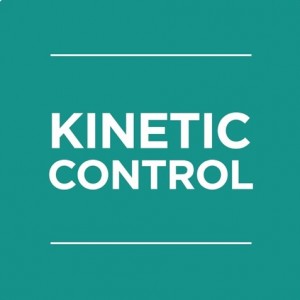In celebrating 20 years of the Kinetic Control concepts and approach, Technical Director Mark Comerford takes a moment to reflect on what has gone before and what is current in the assessment and retraining of movement.
Where we are now…
In line with the vision of the American Physical Therapy Association, Kinetic Control believe it is movement that is integral to the ongoing success of physiotherapy, a conviction continuing to power our desire to place movement at the heart of the entire spectrum of this profession. Movement brings choice to people’s lives; the optimisation of such a priceless medium is fundamental to both the success of the therapist-patient dynamic in addition to the longevity of the individual’s movement lifespan – and all that means and makes possible. This movement health philosophy supplies the bed rock on which the Kinetic Control model stands. After twenty years of education, it’s clear we are not here to treat pain but to manage people with pain to move… and ultimately to move on.
How did we get here?
 The world of movement is moving at a rapid pace. 20 years ago when we started developing the Kinetic Control process the concept of movement control was in its infancy. Good quality research was hard to find. The whole process of analysing movement in terms of how we compensate for restrictions and how muscles work together in synergistic patterns that change in the presence of pain was more of an art than a science. I recall a physiotherapist working with us at that time (mid 1990s), coming back from a visit to the one of the bastions of manual therapy (Australia) making the observation that “it seems that the local manual therapists think of Janda and Sahrmann along the lines of romantic poets”. Dreamers? More like visionaries.
The world of movement is moving at a rapid pace. 20 years ago when we started developing the Kinetic Control process the concept of movement control was in its infancy. Good quality research was hard to find. The whole process of analysing movement in terms of how we compensate for restrictions and how muscles work together in synergistic patterns that change in the presence of pain was more of an art than a science. I recall a physiotherapist working with us at that time (mid 1990s), coming back from a visit to the one of the bastions of manual therapy (Australia) making the observation that “it seems that the local manual therapists think of Janda and Sahrmann along the lines of romantic poets”. Dreamers? More like visionaries.
How times have changed since those days of intuition and hypothesis alone. I consider Shirley Sahrmann and the late Vladimir Janda to be the two people who were way ahead of their time in understanding the true value of movement analysis and retraining. They have been personal mentors of mine, having had a profound influence on the development and strengths of Kinetic Control over the last two decades. The processes they developed, alongside our own processes, which have been built and continually refined by Sarah Mottram and myself, are increasingly supported by high quality movement science research.
For the last 20 years, Kinetic Control has a leading part in the push to recognise that movement rather than pain should be the starting place for both assessment and retraining if we want to be effective in optimising movement health in society. Kinetic Control continues to review movement related research from all over the world, integrating different philosophies and approaches into an evidence-based process of evaluation and retraining. Over the years we have trained and worked with an extensive number of some of the best clinicians out there and as a team we have developed Kinetic Control into one of the most recognised brands worldwide in movement control assessment, retraining and education.
Where next?
Kinetic Control has always tried to be innovative in the field of movement control education. Both the manual and musculoskeletal therapy world are moving away from the old ways of assessing one joint at a time and the concept that pain is the only component worthy of treatment is increasingly challenged. As part of reaching the 20 year milestone we have totally revamped and reinvigorated our modular system of movement control training, linking together functionally related parts of the body into clinical processes. The neck and the shoulder are now considered together, as are the lumbar spine and hip. This updating process has also been highly influenced by the contemporary research highlighting means to more efficiently manage the movement impairment structured assessment reveals. This is now represented by a greater focus on cognitive retraining to correct aberrant processes occurring within both the CNS and peripheral tissues associated with chronic pain, control impairments, activity limitations (disability) and symptom recurrence.
Our new courses are designed for clinicians to better understand how movement in one part of the body affects movement in another, supplying structure in how to make best clinical use of this important information. The courses are structured to make it easy for clinicians to participate in clinically relevant education and to immediately apply what they’ve learned to improve the well-being and movement function of the patients.
Along with the newly developed training structure, we are developing an online movement control retraining catalogue. This exhaustive resource will link movement control testing to clients’ symptoms, providing a large number of retraining strategies to manage impairments found through clinical assessment. This huge range supplies therapists with countless options, helping put movement back into people’s days, and choice back into how these days are filled.
2015: Kinetic Control is celebrating 20 year of Education in Movement. Check out our new look